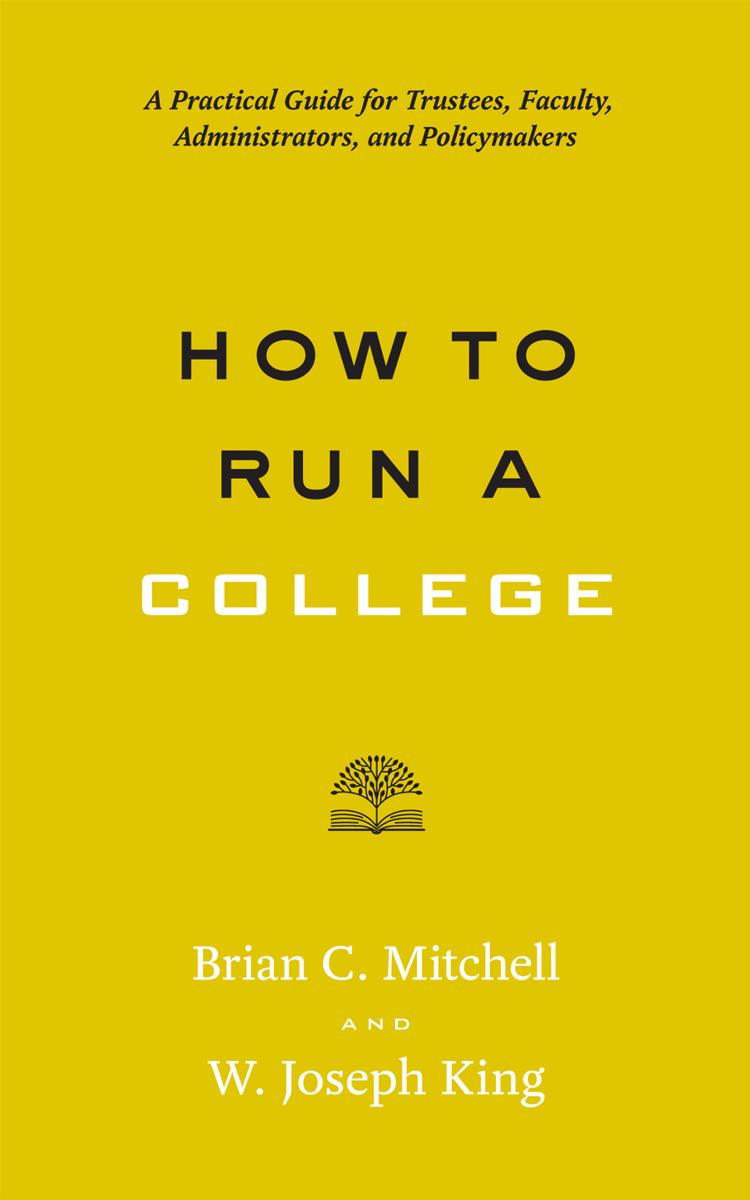How to Run a College: A Practical Guide for Trustees, Faculty, Administrators, and Policymakers by Brian C. Mitchell & W. Joseph King

Author:Brian C. Mitchell & W. Joseph King
Language: eng
Format: epub, pdf
Tags: Education, Administration, General, Higher, Leadership
Publisher: JHU Press
Published: 2018-01-15T00:00:00+00:00
Chapter 7
Athletics
Sports have always been an important part of cultural life. For the early groups of hunters and gatherers, sports taught important skills and the value of teamwork. One essential component was to develop and illustrate male prowess. Early literary evidence about sports appears in the Iliad and the Odyssey, in which Homer extensively describes ancient Greek aristocrats competing in sport contests.1 In ancient Greek sports, athletic prowess was a sign of masculine achievement: “Greek female sport never had the societal importance that was accorded to male sport. It is, nonetheless, eminently worthy of study, not least because of its relevance to gender issues and ethnic discourse. Public, nude, and often violent, male athletics (i.e., high-level, public competitions for prizes) were applauded as a marker of Greek masculine excellence, but—except in Sparta—motherhood and the family home largely circumscribed the social role of females.”2
In the United States, athletics enjoys a rich and evolving history that draws from the individualistic traditions of the Greeks, which promoted courage and endurance; the state-sponsored traditions of ancient Roman sporting events; and the traditions of the British, which emphasized team play and sportsmanship. The object of these traditions was to develop a sense of group loyalty, honor, and rule-abidingness. As Americans fused these historical traditions, a unique ethos developed in American college sports. David Brooks noted in the New York Times that in college sports, A. Bartlett Giamatti, former baseball commissioner and president of Yale University, perceptively surmised that Americans behave like the British but think like the Greeks.3
Intercollegiate sports began in the United States in 1852, when crews from Harvard University and Yale University met in a rowing competition, although Yale opened a college boat club as early as 1843.4 Rowing dominated many of the early discussions about how colleges organized their sports. The first intercollegiate baseball game took place in 1859, between Amherst College and Williams College.5 By 1900, intercollegiate sports included baseball, rugby, and track and field.6 By the beginning of the twentieth century, the role of sports, largely unregulated, had become a major feature of collegiate life and a cause of some concern.
Soon a number of first-tier sports—notably football and basketball—emerged. As the need to adapt evolving sports became more urgent, Theodore Roosevelt convened two White House conferences in the early twentieth century to encourage reforms, specifically in football, to end the injuries and deaths that had caused a number of colleges to discontinue the sport. Roosevelt meant to address concerns and put basic forms of governance into place that would assure consistency, uniformity, and increased safety for athletes playing in a largely unregulated environment.7
On a national level today, organized athletics falls into two distinct categories. In the first category are the sports managed by one of the national governing bodies, including the National Collegiate Athletic Association (NCAA), the National Association of Intercollegiate Athletics (NAIA), and the National Junior College Athletic Association (NJCAA). The NCAA traces its origins to Roosevelt’s White House meetings, when Henry MacCracken, president of New York University, called a meeting of thirteen colleges and universities to make changes in football practices.
Download
How to Run a College: A Practical Guide for Trustees, Faculty, Administrators, and Policymakers by Brian C. Mitchell & W. Joseph King.pdf
This site does not store any files on its server. We only index and link to content provided by other sites. Please contact the content providers to delete copyright contents if any and email us, we'll remove relevant links or contents immediately.
| Administration | Assessment |
| Educational Psychology | Experimental Methods |
| History | Language Experience Approach |
| Philosophy & Social Aspects | Reform & Policy |
| Research |
The Art of Coaching Workbook by Elena Aguilar(48065)
Trainspotting by Irvine Welsh(20055)
Twilight of the Idols With the Antichrist and Ecce Homo by Friedrich Nietzsche(17706)
Fangirl by Rainbow Rowell(7834)
Periodization Training for Sports by Tudor Bompa(7328)
Change Your Questions, Change Your Life by Marilee Adams(6641)
This Is How You Lose Her by Junot Diaz(5772)
Grit by Angela Duckworth(4737)
Red Sparrow by Jason Matthews(4666)
Asking the Right Questions: A Guide to Critical Thinking by M. Neil Browne & Stuart M. Keeley(4576)
Paper Towns by Green John(4169)
Room 212 by Kate Stewart(4107)
Ken Follett - World without end by Ken Follett(3972)
The Sports Rules Book by Human Kinetics(3588)
Housekeeping by Marilynne Robinson(3401)
The Motorcycle Diaries by Ernesto Che Guevara(3332)
Introduction to Kinesiology by Shirl J. Hoffman(3301)
Exercise Technique Manual for Resistance Training by National Strength & Conditioning Association(3292)
Double Down (Diary of a Wimpy Kid Book 11) by Jeff Kinney(3272)
